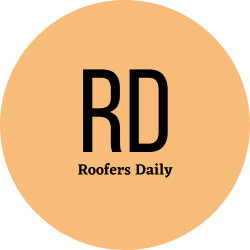The Ultimate Guide to Commercial Roofing: How to Ensure Quality and Longevity for Your Building
by siteadmin

The roof of a commercial building plays a crucial role in safeguarding its occupants, assets, and operations. When it comes to commercial roofing, ensuring quality and longevity is paramount. In this ultimate guide, we will explore the key considerations, best practices, and maintenance tips to help you make informed decisions and protect your investment.
Choosing the Right Roofing Material:
Single-Ply Membrane:
EPDM, TPO, and PVC membranes offer durability, energy efficiency, and ease of installation.
EPDM is known for its weather resistance, TPO for energy efficiency, and PVC for chemical resistance.
Built-Up Roofing (BUR):
Composed of multiple layers of bitumen and reinforcing fabrics.
Excellent for flat or low-sloped roofs, providing durability and protection against UV rays.
Metal Roofing:
Long-lasting and visually appealing.
Options include steel, aluminum, and copper, each with its own set of advantages.
Modified Bitumen:
Asphalt-based roofing system with added polymers for enhanced durability.
Suitable for buildings with moderate to flat roof slopes.
Regular Inspections and Maintenance:
Schedule Routine Inspections:
Regularly inspect the roof for signs of damage, leaks, or deterioration.
Address any issues promptly to prevent them from escalating.
Clear Debris:
Remove debris, leaves, and branches regularly to prevent water pooling and potential damage.
Check Flashings:
Inspect flashings around vents, skylights, and other penetrations for signs of wear or damage.
Gutter Maintenance:
Ensure gutters are clear of debris to prevent water backup and potential damage to the roof and building.
Address Ponding Water:
Correct any areas where water is pooling on the roof, as ponding water can lead to structural issues.
Professional Roofing Services:
Regular Professional Inspections:
Schedule annual inspections by a qualified roofing professional to identify potential issues early on.
Roof Coatings:
Consider applying reflective coatings to enhance energy efficiency and protect the roof surface.
Roof Restoration:
In some cases, restoration may be a cost-effective alternative to a complete roof replacement.
Emergency Repairs:
Have a plan in place for emergency repairs to address sudden damage or leaks promptly.
Sustainability and Energy Efficiency:
Cool Roof Systems:
Consider cool roof systems to reflect sunlight and reduce heat absorption.
Enhances energy efficiency and reduces cooling costs.
Green Roofing:
Explore green roofing options, such as living roofs with vegetation, to improve insulation and contribute to environmental sustainability.
Investing in the Guide to Quality Commercial Roofing for Building Owners and implementing proactive maintenance measures are essential steps in ensuring the longevity and reliability of your building’s roof. By carefully selecting the right roofing material, conducting regular inspections, and addressing issues promptly, you can protect your investment and create a secure and durable roofing system for your commercial property. Remember, consulting with experienced roofing professionals is crucial for making informed decisions and ensuring the optimal performance of your commercial roof.
The roof of a commercial building plays a crucial role in safeguarding its occupants, assets, and operations. When it comes to commercial roofing, ensuring quality and longevity is paramount. In this ultimate guide, we will explore the key considerations, best practices, and maintenance tips to help you make informed decisions and protect your investment. Choosing…
Recent Posts
- Hiring Roofing Contractors Corpus Christi, Texas
- Roofing Company Savannah Sheds Light on the Lifespan of Roofs: How Long Should a Roof Last?
- Choosing the Best Gutters for Your Jacksonville FL Home
- Choosing the Best Gutters for Your Chicago Home
- Exploring the Drawbacks of Duct Cleaning: Insights from Air Vent Cleaning Charlotte
